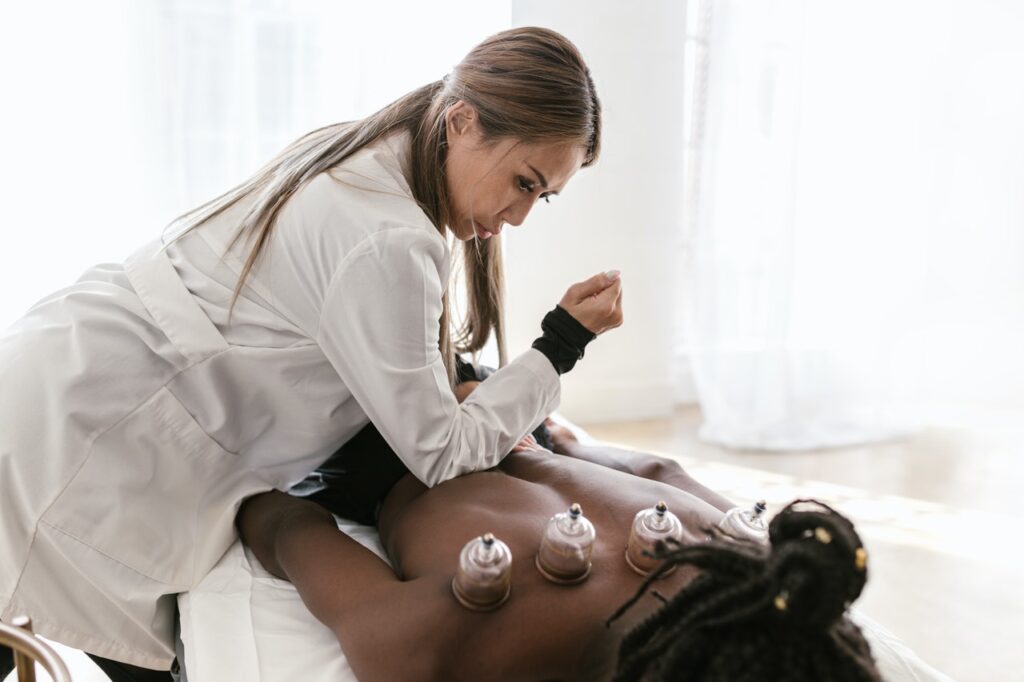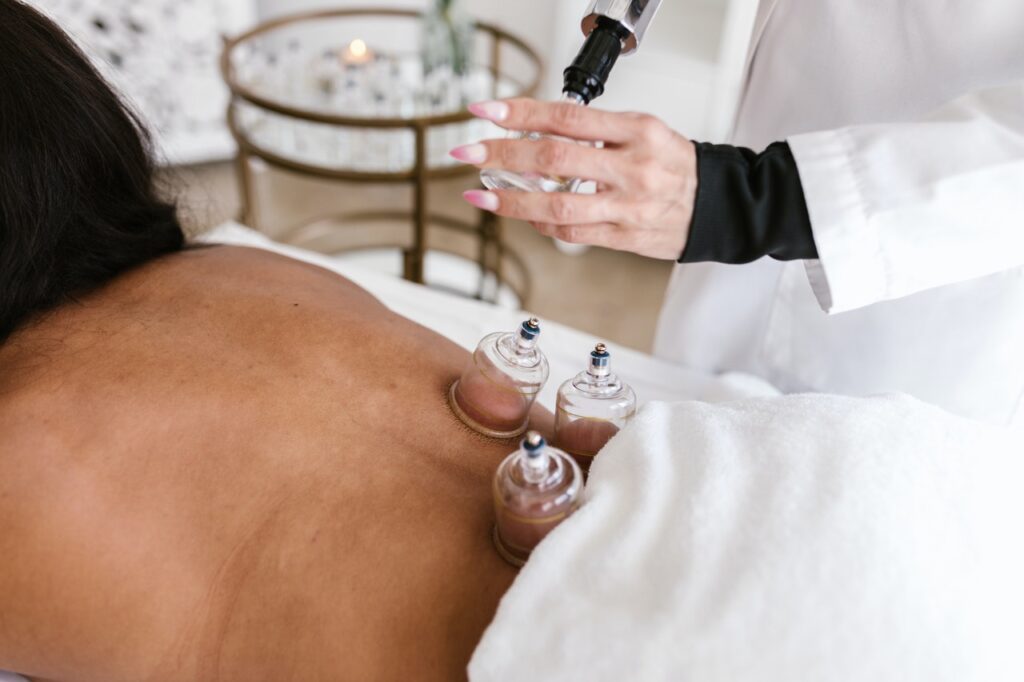The ancient vacuum pressure technique of cupping, now used primarily for its reputed positive effect on muscle recovery, has some pretty famous fans. Indeed, in recent years it’s been reported that everyone from Michael Phelps to NBA stars uses cupping to help heal aches, pains and injuries.
You might recognise those telltale bruises on your favourite sports star’s body, but fear not; this ancient practice that uses glass cups on the skin to create suction, whilst still not scientifically proven to be medically beneficial, is relatively painless.
But what exactly is cupping? Evo Academy, who run cupping courses, tell us that “Cupping therapy is a form of local suction massage used on the skin to increase blood flow and promote healing”.
They go onto explain that, “A partial vacuum is created in cups placed on the skin by means of heat or suction”. This action pulls in the soft tissue and draws blood into the area and the cup is then left in place for a few minutes.
As explained by Heathline, there are four main methods of cupping. These include dry cupping, which is a suction-only method and wet/bleeding cupping which involves both suction and controlled medicinal bleeding.
Then there is running cupping, which, as Healthline again explains, involves moving suction cups around the body after applying oil to massage the desired area. Finally there is flash cupping which “involves quick, repeated suction and release of cups on an area of the body”.
Most medical and health professionals can perform cupping if they have received the proper training and undergone a cupping course. These include Chiropractors, Massage Therapists, Acupuncturists, Medical Doctors and Physical therapists.
If you’re considering this procedure, do make sure that your therapist is registered with the British Cupping Society, which falls under the umbrella of the General Regulatory Council for Complementary Therapies (GRCCT).
By now you’re probably wondering exactly why people might undergo this therapy? Let’s explore further; here are 4 potential benefits of cupping therapy.
May Help Circulation
Cupping promotes blood circulation to the areas where the cups are placed, which is often at the point of injury. This may help relieve tension and pain in the muscles, and could even promote cell repair through increased blood flow, according to advocates of the therapeutic practice.
It should once again be noted that scientific studies are thus far reluctant to make concrete conclusions about the efficacy of cupping.
Read: What Are The Potential Benefits Of Soaking In A Hot Tub?

Potential Stress Relief
Turbulent world events, personal struggle, stress, anxiety and worry are some of the common things we experience daily. Managing these feelings is essential in maintaining a healthy disposition in life, but that’s easier said than done. Whilst the benefits of cupping are still being explored, some use the ancient practice as a form of stress relief.
This is because, as Women’s Health Mag point out, ‘’Cupping may be helpful in treating the more physical manifestations of stress’’.
You know those symptoms, of a clenched jaw, tight shoulders and tense muscles? Well, cupping’s potential for pain relief may just help lessen the physical burden of stress, too.

Help Expel Toxins From The Body
That improved blood flow brought on by cupping that we keep mentioning may also help restore lymphatic circulation, the complex bodily system of fluid transport and drainage.
Some specialists believe that by stimulating lymphatic drainage, you quicken the release of waste and toxins from the body, which could be particularly useful for those suffering from lympathic fluid build up due to cancer and cancer treatments that involve removal of the lymph nodes, as well as from burn scar excision, lipectomy, filariasis, and several other causes.
Can Help Lighten Varicose Veins
Varicose veins are those bluish bulging veins that appear just under your skin, usually on legs and feet. The condition is often found in pregnant women and the elderly, as well as those who have to stand for long hours on end. These unsightly veins appear when your usual blood circulation process has been interrupted.
Since cupping increases blood circulation to the area where the cups are placed, the therapy may be useful in lightening the appearance of varicose veins and lessening the pain associated with the condition. It should be noted that only dry (not wet) cupping is recommended for varicose veins.
It should also be noted that the majority of potential benefits of cupping are believed to be more fully realised when combined with both other traditional and complementary therapies, such as acupuncture, chiropractic and dietary approaches to pain relief and healing.
The Bottom Line
Cupping is an ancient tradition that needs to be understood if it is to be helpful. If you’re interested in learning more about cupping, there are comprehensive cupping courses online that can teach you the theory, language and practice of cupping, helping you understand how effective it might be.
*This article is not intended to replace medical advice, diagnosis or treatment given by a qualified health professional. Instead, this article only provides information, not advice. For any medical enquiries, always consult your GP first*





